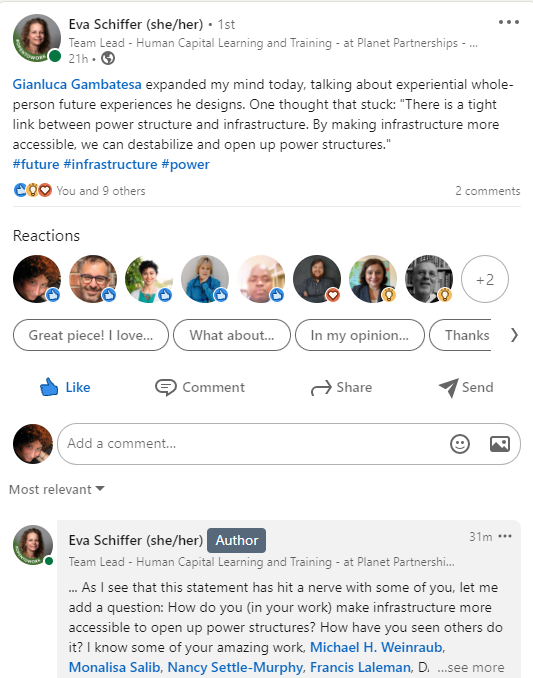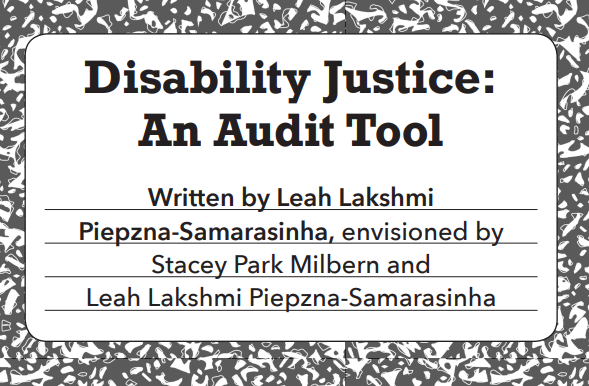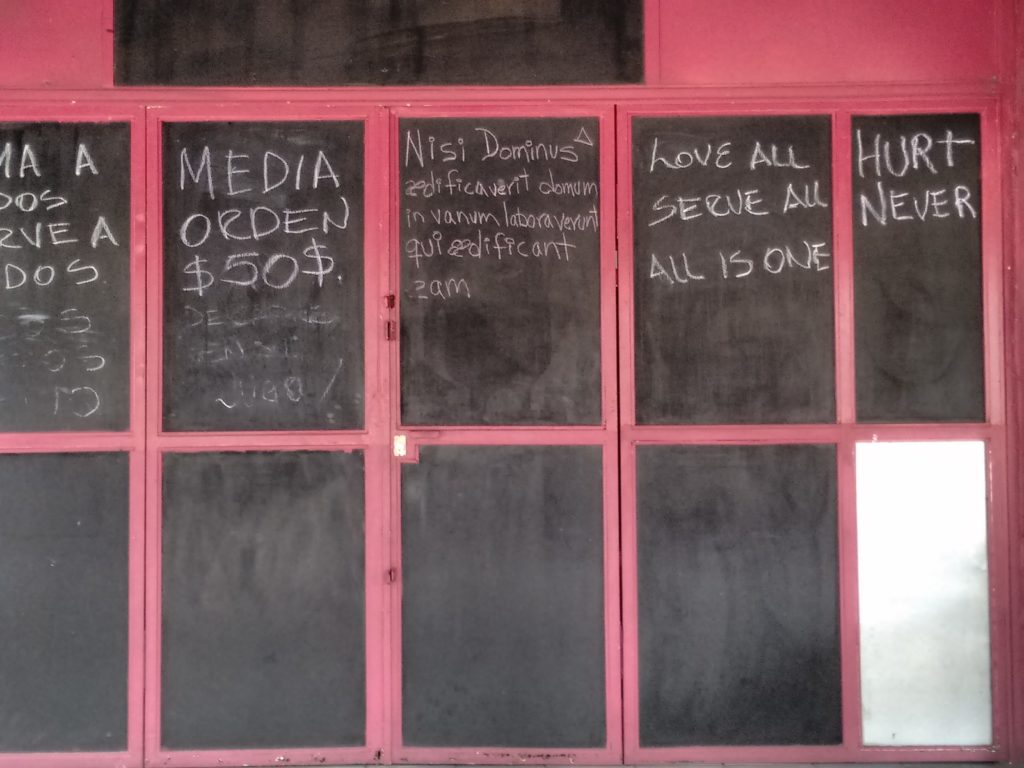This post is lightly edited part of a three part series on Liberating Strategy by Keith McCandless and friends. Part 1 – Part 2 – Part 3
I have been using Strategic Knotworking, a complexity friendly alternative to traditional strategic planning, with cross disciplinary teams in international agriculture development, ecosystems management and mental health. For the most part, these are externally funded initiatives and have requirements both for results (application of the work) and for cross-team learning. Funders have an agenda. Grantees have their agendas. Sometimes there is not useful clarity about how these agendas work in sync. And there is rarely opportunity or support for shared optimization of what has been identified and exploration of what might be possible.
Traditionally, each team does their own strategy development (a.k.a. “Grant application”), get the grant money, do their work, show up at “learning events” to share what they learned and then go back to their own projects or even parts of the projects. There is a burst of energy at the convening that then dies away. This habit reinforces silos. People tend to focus on their grant, their context. There is little opportunity for shared language for strategy, learning, adaptation and evaluation. There is little genuine social connection to support peer support and social learning.
The six Knotworking questions listed below plus the Ecocycle make it possible for a group to look back critically, assess the current state, and prospectively generate options to move forward, all with shared language and shared structures. Here are the questions.
- What is the fundamental purpose of our work (as individual projects/as a portfolio)?
- What is happening around us that demands change?
- What are the critical uncertainties and paradoxes we must face to make progress?
- Where are we starting, honestly?
- Based on what we have discovered, what is now made possible?
- What are our next steps and how will we know we are making progress?
From answering the six questions a shared language evolves. Fresh ideas across the portfolios come into focus. Relationships form and deepen creating space for peers to ask for and offer specific help. Teams can more easily refer to issues across the contexts for optimization. Emergent ideas can be supported across the portfolio of grant funded projects.
What shows up repeatedly is how silos get busted or rather become more permeable and even networked. For example, conversations around the Ecocycle generate shared understanding and disparate elements are woven together. Hearing and learning about other groups’ Knotworking approach stimulates the kinds of cross pollination that their funders dream of. Simultaneously, through use of the LS portfolio, relationships and network weaving among the participants is building social capital. Two aspects of Knotworking seem most useful in this context.
Action and Learning Entwined
The first is the provocation of the six questions that allows emergent thinking, grappling with very real tensions and contradictions in full view (rather than furtively worrying about them but NOT discussing them), and the iterative way they unfold. This iterative function keeps monitoring, learning and evaluation as PART of the entire process, not just something tacked on at the end in a report. Knotworking becomes part of the DNA of the work. It transforms learning and adaptation as concepts and observation into practical and visible next steps. Action and learning become entwined.
Exploring Together Generates New Options
The second is the ability to layer Ecocycles and see what is similar, what is different, where there are possibilities alone and together. One project may excel at moving things from birth or piloting to scaling or maturity. Another may be full of amazing ideas, but get stuck in the scarcity trap. The team that moves things well through that trap may have stories and approaches that break the log jam. Yet other teams may have the great self awareness that shows up in creative destruction to make space for something new. Teams then look to see how to balance their own work and when to collaborate with teams who have complementary strengths in their work.
Creative Destruction Makes Space
I want to call out specifically how Ecocycle and the first three Knotworking questions help to make creative destruction visible, discussible and even valued, rather than feared. This rebalances the relationship between the grantees and their funders into a more collaborative relationship. And it does this because it is not some abstract thinking, not blaming, but concrete sense making, practical-yet-ambitious dreaming, and actionable, measurable next steps. Once the concept and language of Ecocycle is shared, then more rapid and useful reviews begin to happen.
For example, a group of researchers leading projects in Africa and South Asia did a traditional face to face kick off meeting, essentially presenting their plans and everyone went home. When the pandemic hit, the next annual F2F meetings were not possible, so we designed an online gathering that used the six questions with each team doing an Ecocycle mid way through the event. The online interactions were spread out over three weeks to give teams to amplify their Ecocyles and consult with others. The group did a “virtual tour” through each Ecocycle, positing questions, noting similarities and differences, and noting where they could help each other. This became the basis for their almost-monthly community of practice meetings. They had a basis to want to come together across projects.
For example, there was a measurement tool they all had to use but few were well-practiced with it, so it was clear that practice needed to get out of the scarcity trap and into the birth phase of Ecocycle. In this case it was in the form of a community of practice (CoP). A couple of CoP meetings and things broke through the log jam.
Another challenge was replacing field research with online research due to the pandemic that needed more than a little nudge. AND something had to be removed to make space for new practices, provoking good conversations of creative destruction. So often new ideas and practices are added to existing work, reducing the chances they will take root and even compromising the old, less-than-ideal practices. Creative destruction helps remove the deadwood in a way that shows the value, rather than simply critiquing old practices or punishing those who were practicing them. (“Don’t creatively destruct me out of a job!”)
Resistance, Results, and Movement Forward
Previously, each grant project would appreciate hearing about others’ projects. But it was much less common that making sense across projects, using a shared framework and language, would generate more significant progress for each project and for the larger grant-funded portfolio. There are challenges in doing this. Power and control always show their face when we share our work, warts and all. Resistance to considering creative destruction is a relevant example.
Knotworking and Ecocycle sometimes raise eyebrows at first. Resistance happens. What changes is when results happen. We know we are making progress when new leadership emerges from junior participants, when the big bosses no longer feel the need to over control the meetings, when the funders find a new, more collaborative role with grantees rather than the enforcer or setter of all agendas.
Across time, we know we are making progress when cross project teams continue to identify shared challenges and opportunities and act on them. When people start telling new stories about the work that help others understand the work and want to join, we know we are making progress! (As our colleague Michael Arena suggests, positive gossip is all abuzz).
When teams have used the six questions to generate ideas, needs and relationships and understood where they are on the Ecocycle, when there is concrete action, we know we have made progress both within and across the portfolios.





